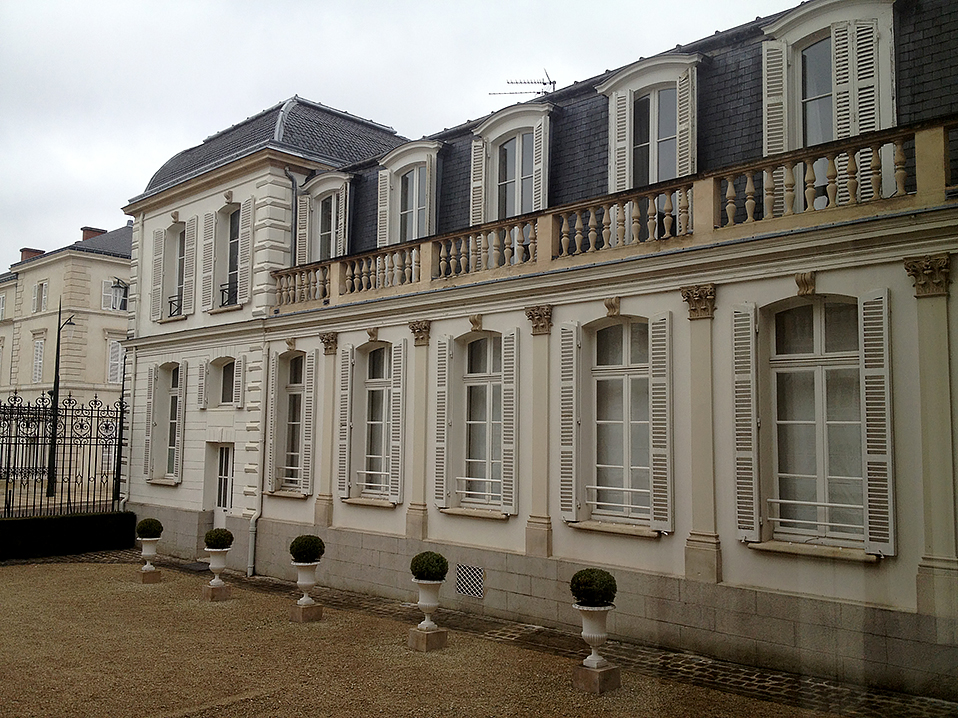Deep copper, coral-pink color; pink grapefruit, cherry, strawberry, orange zest on the nose; cherry, strawberry, pink grapefruit, blood orange, red berries on the palate.

Extra brut (drier than brut); delicate, fresh flavors; medium-full body. The initial attack is soft and silky, but that quickly evolves to a clean acidic cut on the mid-palate and finish. That surprising plot twist in the mouth makes for an intriguing experience. The red fruits become even more assertive in the second glass, when the wine has had time to breath and warm a bit; 12.5% ABV.
This is vintage champagne—all the grapes were harvested in 2012. It spent seven years in the cellar before release. Blend of 42% pinot noir, of which 13% was still red wine, producing dry, chalky notes, the dramatically deep color, and more phenolic structure; 35% chardonnay, 23% pinot meunier. In this vintage, the black grapes—pinot noir and meunier—comprise almost two-thirds of the blend, with chardonnay only playing a bit part. Moët notes the pinot meunier grapes were particularly outstanding in 2012.
The house only produces vintage wines in special years. The first was made in 1842. This is just the 43rd vintage rosé. The 42nd was made in 2009. At first, 2012 did not look promising at all. There were frosts through winter and spring, driving rain, hail storms, a snap cold spell just when vines were flowering. Summer brought unusually hot weather and a water shortage. Then August saved everything with hot, dry weather that meant lower yields than normal, but the grapes amazed growers by being sweeter and more acidic than previous vintages. Voilà! Another Grand Vintage effort.

Moët & Chandon traces its roots to 1743 and founder Claude Moët. At that time, Champagne, the northernmost wine region in Europe, was something of a backwater, and the wine considered inferior. Only later did it become the internationally recognized symbol of luxury, quality, and indulgence.
Significant credit for the transformation from backwater to prominence goes to Claude Moët’s grandson, Jean-Remy Moët, who marketed Champagne to the world at the end of the 1700s. As Moët’s website asserts “The important figures of the era, from the Marquise de Pompadour to Talleyrand to Napoleon quickly fell in love with the House’s effervescent wine. Moët & Chandon was soon the icon of success and elegance that it remains to this day.”

The Marquise de Pompadour, mistress of King Louis XV, was a highly influential tastemaker. Her famous quote: “Champagne is the only wine in the world that makes every woman beautiful” refers to Moët’s bubbly. Napoleon visited the House several times and awarded Jean-Remy the Légion d’honneur, one of France’s highest honors. Legends claim Napoleonic troops invented the tradition of using a saber to open bottles of Moët to celebrate victory.
As you might expect, Moët & Chandon takes great pains to preserve and tout its association with success and prestige. Nothing wrong with that when you can back it up with 270-plus years of quality. Today, Moët & Chandon is the largest estate in Champagne with 2,840 acres of parcels on rich chalk soil; half are grand crus and one-quarter are premier crus. The parcels are scattered among the five main areas of Champagne: Montagne de Reims, Côte des Blancs, Vallée de la Marne, Sézanne, and Aube. The chef de cave (maker of the wine) is Benoît Gouez.
Moët & Chandon 2012 Grand Vintage Rosé Champagne is a rich and delicious wine with a surprising and pleasing evolution both in the mouth and in the glass. Red fruits play the lead roles, chardonnay is in the background. Cutting acidity emerges after the initial attack, making this more a food pairing wine than a demure aperitif. Stunningly lovely color. Wines like this do better with seasoned drinkers. It is expensive, bone dry, has significant acidity. Pair with seafood and fish; roast chicken with slow-roasted tomatoes and cheesy grits; pork braised in Champagne vinegar; creamy risotto; quail; duck. $65-90




